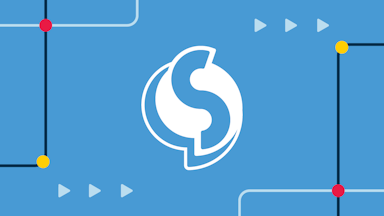What is bandwidth?

Bandwidth is a bit tricky to explain. It refers to the capacity of your internet connection—the maximum amount of data you can transfer at once, based on your plan and connection type.
Much of the confusion around bandwidth seems to come from the fact that it’s often used interchangeably with speed. Even internet service providers (ISPs) tend to use the terms flexibly. The two concepts are pretty similar, but there are some fine technical differences that make them distinct.
Bandwidth is typically measured in either megabits per second (Mbps) or gigabits per second (Gbps). This refers to the amount of data (in bits) that can be transferred over the connection each second. For example, a fiber connection might have bandwidth listed as 300 Mbps or 1 Gbps, while DSL might offer 25 Mbps or 50 Mbps.
A Megabit is one million bits, while a Gigabit is one billion bits. Note that bits are not the same as bytes—a byte is made up of eight bits and is more commonly used in discussing data storage rather than network traffic.
How is bandwidth different from internet speed?
Several analogies are often used to describe the difference between bandwidth and speed, but we think the best way to look at it is this: bandwidth is the theoretical maximum data transfer rate on a given connection, while speed is the actual data transfer rate.
Let’s say you’re paying for a 1 Gbps connection. That’s your bandwidth. Now, let’s say you do an online speed test and find that you’re only getting 750 Mbps. That would be your speed.
Your bandwidth sets the upper limit for your internet speed—you can’t go faster than your bandwidth will allow. However, your speed isn’t always guaranteed to reach that limit—in fact, some tasks simply won’t use that much bandwidth. For example, Netflix will only use as much bandwidth as it needs to play the video, and website loading times or file downloads are often throttled by the server hosting them.
Find out how much speed you need based on how many devices are connecting and what apps you're using.
Can you increase bandwidth?
The only way to increase bandwidth is to purchase more from your internet provider. The increase available depends heavily on the plans the provider offers and the type of connection you have—fiber, DSL, cable, or satellite, for example. If your provider doesn’t offer an internet plan with enough bandwidth to meet your needs, you might consider moving to a faster ISP.
It’s also worth noting that, while your equipment can’t increase the bandwidth of your internet plan, it can limit how much of that bandwidth you can use. For example, if your router is old and doesn’t support the latest wireless standards, your Wi-Fi might be capped at 200 Mbps even though your plan provides up to 1 Gbps.
Struggling with slow speeds? Check out our guide to diagnosing and troubleshooting slow internet.
How much bandwidth do you need?
How much bandwidth you need really depends on how you use your internet connection (or how you’d like to use it in the future). If you participate in a lot of video calls, HD streaming, or have a large household that’s always online at the same time, you’ll need a healthy amount of bandwidth to have a good experience. If all you do is check email a couple times a week and scan social media, you can get by with less.
Streaming HD video tends to be one of the most bandwidth-intensive tasks. For example, Netflix can use up to 3 GB per hour for HD video and up to 7 GB per hour for 4K. The streaming provider recommends a minimum of 15 Mbps bandwidth for streaming in 4K—preferably more.
Keep in mind that those recommendations are for a single device performing only that task at that time. If you have multiple devices doing different things at the same time—say, kids streaming downstairs while you work upstairs—you’ll want to up your speed significantly.
Which types of internet have the most bandwidth?
Fiber definitely offers the most bandwidth of any type of internet service. Not only does it offer faster maximum download speeds, but it usually has much faster upload speeds than the competition, often equal to the download speed. This is called symmetrical speed and is only possible with the huge bandwidth of fiber lines.
Cable is next on the list. It can often come close to, or match, fiber download speeds, but the upload speeds tend to fall short. Again, this is because cable lines don’t offer the same amount of bandwidth as fiber.
DSL and satellite bring up the rear of the bandwidth train. In addition to slower overall speeds, they don’t offer nearly as much bandwidth per dollar spent on your plan—they tend to be pretty low value, in other words.
Whether you’re in need of more bandwidth or just ready to make a change, check out our guide to switching internet service providers.
Dave Schafer is a freelance writer with a passion for making technical concepts easy for anyone to understand. He’s been covering the world of gadgets, tech, and the internet for over 8 years, with a particular focus on TV and internet service providers. When he’s not writing, Dave can be found playing guitar or camping with his family and golden retriever, Rosie.
Bri Field has a background in academia, research writing, and brand marketing. She has edited scientific publications, conference papers, digital content, and technical communications. As Assigning Editor, she enjoys ensuring all content is accurate, clear, and helpful. In her free time, you can find her in the kitchen trying a new recipe, out on a hike, or working through her massive TBR list.
